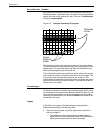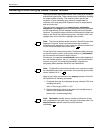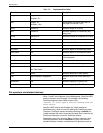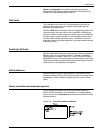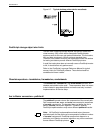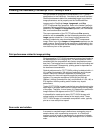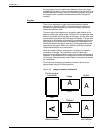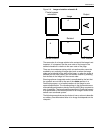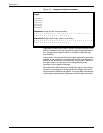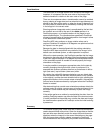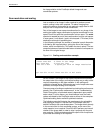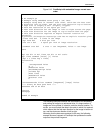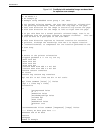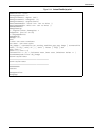
POSTSCRIPT
2-28 XEROX DOCUPRINT NPS GUIDE TO USING PAGE DESCRIPTION LANGUAGES
For any image, there are eight such sequences (four scan origin
possibilities, with either a row or a column order choice for each). Any
of these sequences may be used in a PostScript program as long as
the image-to-user coordinate transformation matrix is prepared
correctly.
Purpose
There is one sequence in each case that enables the fastest
processing on DocuPrint NPS. You should know why there is a
difference in speed depending on the order chosen, and how to
choose the optimum order.
The laser scans the image area in a specific order relative to the
paper to produce the output image. For DocuPrint, the fast laser scan
direction is parallel to the long edge of the paper, and the slow laser
scan direction is parallel to the short edge of the paper. The fast scan
direction is in the direction of increasing y coordinates and the slow
scan direction is in the direction of increasing x coordinates in the
PostScript default user space, with the y axis corresponding to the
long edge of the paper. Refer to the Adobe PostScript Language
Reference Manual for more information.
When an image is used in a document, it is placed in a specific
orientation on a page. The orientation of fast and slow scan
directions for the image relative to those for the entire output page is
important. If the directions for the image do not match the directions
for the page, extra processing must be done at the printer to reorder
the image data.
The most time-consuming processing is rotation, shown in the
figures below using US Letter paper size.
Figure 2-8. Image orientation mismatch A
A
A
A
A
Printer’s paper
orientation
Image
Fast
Fast
Output
Output
without rotation
Slow
Output
with rotation
Rotated



